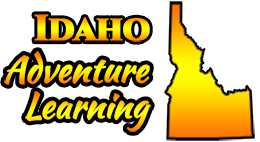Idaho=Climate Change?
Submitted by Barbara Brooks on Wed, 2016-07-13 00:00
There are those that might question that our climate is changing but there is definitive proof that it is indeed happening. Our climate is changing and we know this based on measurements that we have been collecting over time. Check this out: http://www.climate-lab-book.ac.uk/files/2016/06/spiral_optimized.gif
So if we know that climate change is happening globally, what does it mean for Idaho? As our climate warms, the elevations that receive snow in the winter are going to shift. In other words, places which receive mostly snow in the winter are going to shift to a snow/rain mix. This is important because snow pack holds our water longer. If we don't have a snow pack in reserve, the melt happens earlier and we run out of water earlier in the season. This affects farmers who will have less water for crops, skiers will have less snow to ski on, ski resorts will have to open later and close earlier which affects community economy, there will be less water in reservoirs for recreating and it will be harder for fish to migrate due to less water in rivers and streams. As you can see, life in Idaho will change as climate change progresses.
Digi-learner question of the day: How might you convey ideas about Idaho climate change to your students?

Comments
Climate Change in Idaho
Since we live in a largely rural state that relies heavily on agriculture, I feel that the kids can see the need for water all around them. I think having the kids research the snowpack for each year and transfer what that pack means into actual water that can be used for irrigation could be very powerful to them. They need to be exposed to data and how to interpret it. It’s not easy, even for adults, but they can be walked through it and will understand more than what we tend to give them credit for. I also think they can look at the data on water levels in the reservoirs and discuss why they might be high or low during certain times of the year. If students are ready, they could look at the big picture of Idaho compared to the U.S. or globally and compare/contrast what they find.